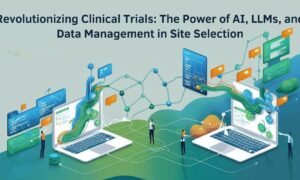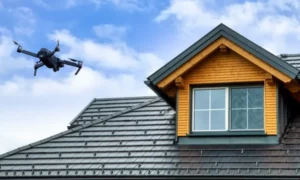Theoretically speaking, drone technology promises unlimited possibilities. From agriculture to zoning, drone tech offers a wide range of industries opportunities for heightened efficiency and greater safety. Practically speaking, however, the future that drones promise has yet to arrive. Drones have taken off, but adapting basic drone capabilities to effectively accomplish specialized tasks continues to be a challenge for many manufacturers.
“The commercial drone industry is still in its infancy stage, with many UAV manufacturing companies racing to build out products, conduct real-world testing, and conform to current and long-term regulatory requirements,” explains Shaun Passley, founder of ZenaTech. “The next stage of drone development, which few companies have yet to master, is implementing customizability to add functions and features that make the technology easier to understand, access, and operate.”
ZenaTech is the developer of the ZenaDrone 1000, an intelligent unmanned aerial vehicle (UAV) that incorporates machine learning software and artificial intelligence. The ZenaDrone was created to revolutionize the farming sector, but has leveraged its customizability to become a multifunctional drone that empowers innovative advancements in a wide variety of industries.
In addition to being the Founder of ZenaTech, Shaun is also the founder of EPAZZ, Inc., which provides mission-critical metaverse, blockchain, cryptocurrency, and cloud-based business solutions. EPAZZ, Inc.’s software and product development includes the design, research, and development of ZenaDrone and future products and services.
Drones have grown in popularity in the commercial sector in recent years, primarily for their ability to remotely capture high-quality photos and video. While this has proven to be beneficial in many industries, ZenaTech has found that expanding on the remote services that drones can provide dramatically increases their value.
“If you are working in environmental monitoring and conservation, you have a different set of needs than a business working in security and surveillance, or warehousing and inventory,” says Shaun. “Moving beyond cameras to equip drones with any of a number of sensors optimizes them for specific applications. In essence, customizability transforms a drone from a tool to a solution.”
Agriculture provides a great example of an industry in which smart, multispectral sensors can be used to gather data that is then used to streamline processes and improve yields. The ZenaDrone has been used in the farming industry to detect the near-infrared reflectance of plants using overlays generated by conventional RGB cameras and multispectral camera systems. Its multispectral images can detect early plant stress invisible to the naked eye before they result in decreased harvest yield. By applying AI to the process, the ZenaDrone becomes a plant tracking and growth rate solution that can detect growth retardation, benchmark yield, and phenotype plants.
Environmental monitoring and conversation is another field in which drone tech can help to advance efforts. When drones are equipped with the technology that allows them to read heat signatures, they can scan for thermal body heat signatures of poachers and illegal loggers, as well as detect heat signatures from possible forest fires.
The ZenaDrone’s customizability enables it to operate a precision planting and reforestation seed dispersal mechanism. The mechanism allows users fighting deforestation to target critical areas and release seeds, significantly reducing the operational costs related to environmental conservation, monitoring, and preservation.
As drone technology advances, customizability will clearly be a component that drives broader acceptance and application. However, for those who are exploring the use of drones for their business operations, there are other factors to consider.
“The drones that are most helpful to businesses will be those that are most self-sufficient,” Shaun explains. “Through the use of planning software, drones can be pre-scheduled to automatically fly routes — be it for surveillance, inspections, data collection, or other purposes — providing consistent and accurate service, thus freeing up critical resources. When the routes are done, self-sufficient drones return to be recharged for their next flight, automatically detecting their wireless charging pad and landing on it through the use of AI.”
The ZenaDrone UAV offers both self-flying and auto charging, as well as AI-empowered GPS tagging and terrain mapping. In addition, all of its functionality is built upon a durable carbon fiber body that resists humidity, heat, moisture, and other atmospheric impacts.
Business Insider recently reported that demand for drone technology is expected to grow by more than 60 percent during the next year. However, it highlights that one key to success in the commercial sector will be advancements that make customizable drones more accessible. ZenaDrone’s commitment to customizability is paving the way for an ever increasing number of industries to be able to benefit from drone tech.



































